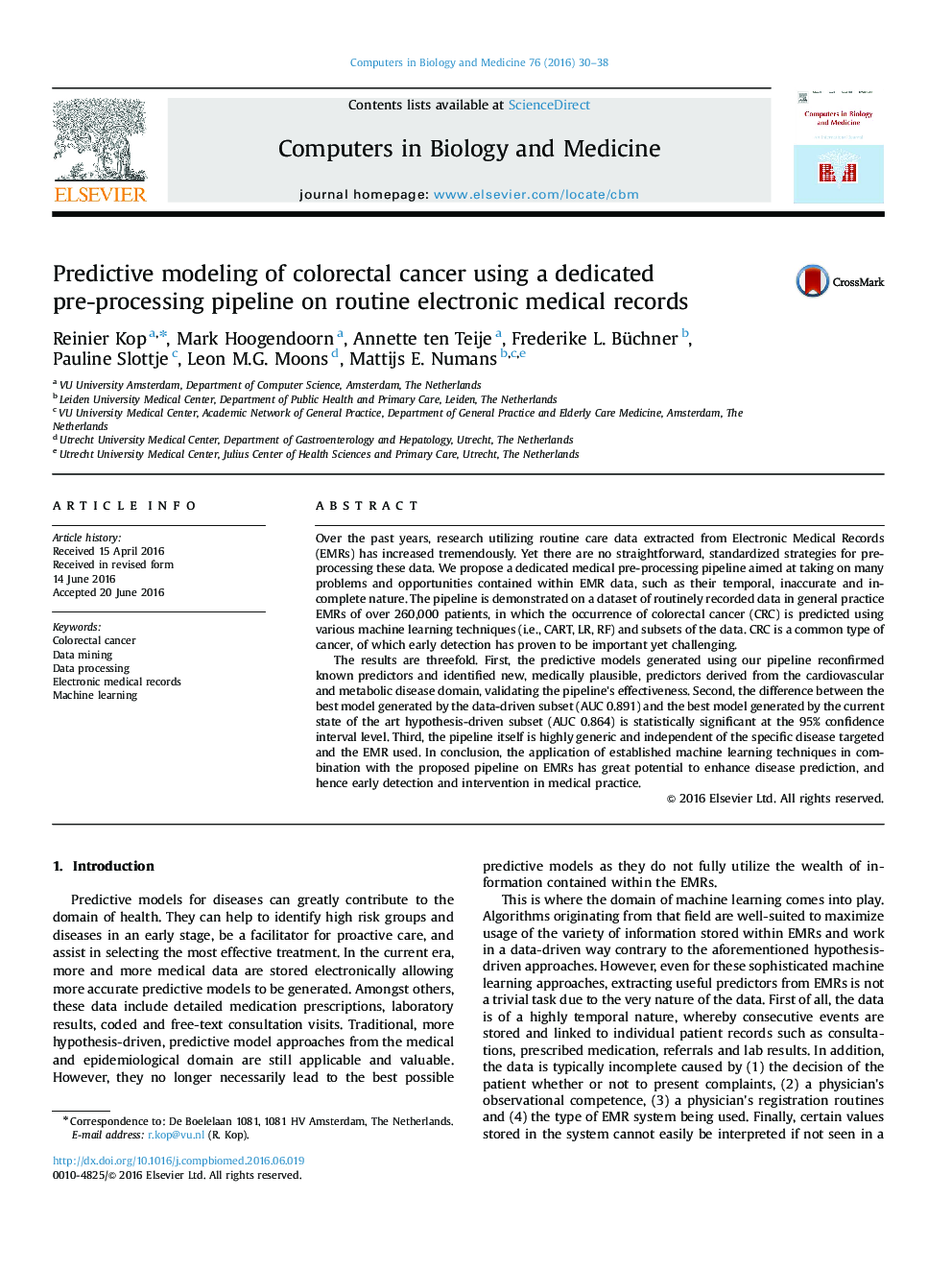| کد مقاله | کد نشریه | سال انتشار | مقاله انگلیسی | نسخه تمام متن |
|---|---|---|---|---|
| 504763 | 864429 | 2016 | 9 صفحه PDF | دانلود رایگان |
• A data-driven pre-processing pipeline for medical data mining is presented.
• The pipeline is validated by predicting the risk of colorectal cancer.
• The pipeline outperforms a state-of-the-art hypothesis-driven approach.
• Features generated include both established and new, medically plausible, predictors.
• The pipeline is independent of the targeted disease and data.
Over the past years, research utilizing routine care data extracted from Electronic Medical Records (EMRs) has increased tremendously. Yet there are no straightforward, standardized strategies for pre-processing these data. We propose a dedicated medical pre-processing pipeline aimed at taking on many problems and opportunities contained within EMR data, such as their temporal, inaccurate and incomplete nature. The pipeline is demonstrated on a dataset of routinely recorded data in general practice EMRs of over 260,000 patients, in which the occurrence of colorectal cancer (CRC) is predicted using various machine learning techniques (i.e., CART, LR, RF) and subsets of the data. CRC is a common type of cancer, of which early detection has proven to be important yet challenging.The results are threefold. First, the predictive models generated using our pipeline reconfirmed known predictors and identified new, medically plausible, predictors derived from the cardiovascular and metabolic disease domain, validating the pipeline's effectiveness. Second, the difference between the best model generated by the data-driven subset (AUC 0.891) and the best model generated by the current state of the art hypothesis-driven subset (AUC 0.864) is statistically significant at the 95% confidence interval level. Third, the pipeline itself is highly generic and independent of the specific disease targeted and the EMR used. In conclusion, the application of established machine learning techniques in combination with the proposed pipeline on EMRs has great potential to enhance disease prediction, and hence early detection and intervention in medical practice.
Journal: Computers in Biology and Medicine - Volume 76, 1 September 2016, Pages 30–38
